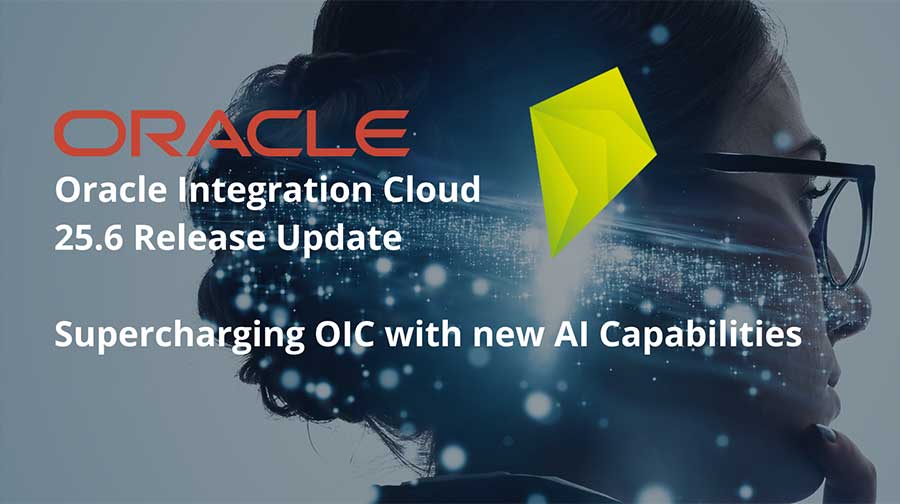Oracle Integration Cloud 25.06 Release Update - Supercharging OIC with new AI Capabilities

Enhanced AI-Powered Features in OIC
The latest updates to Oracle Integration leverage the power of Oracle Cloud Infrastructure (OCI) AI services to streamline complex tasks and automate intelligent decision-making. Here's a look at the key capabilities:
- Analyze and Extract Information from Images (Vision): The new OCI Vision action allows your integrations to analyze images and extract valuable information. This is perfect for automating data extraction from visual content, such as identifying objects, text, or faces within an image.
- Generate Text and Responses (Generative AI): The OCI Generative AI service is now a core part of OIC. You can use it to generate text responses to requests or create customizable large language models (LLMs) for chat, allowing you to build smarter, conversational integrations.
- Perform Text Analysis and Translation (Language): With the OCI Language action, your integrations can perform in-depth text analysis. This includes language detection, sentiment analysis, key phrase extraction, and text translation, all of which are essential for processing unstructured text data.
- Transcribe Speech to Text (Speech): The OCI Speech service enables your integrations to transcribe spoken language into highly accurate text. This feature is ideal for automating processes that involve voice recordings or real-time conversations.
- Query Enterprise Data for Context-Specific Answers (Generative AI Agents RAG): The OCI Generative AI Agents RAG (Retrieval-Augmented Generation) service allows your integrations to ask questions and receive answers based on your specific enterprise knowledge bases and current data. This provides context-aware, highly relevant responses.
- Extract Information from Documents (Document Understanding): The OCI Document Understanding action has been enhanced to extract information from various documents like invoices, receipts, and passports. You can now also manage processor jobs directly from an integration.
Boosting Productivity with AI
Beyond embedding AI into your workflows, OIC now uses AI to make the development process itself more efficient:
- AI-Driven Integration Creation: You can now create an integration from scratch using natural language. By simply describing what you want your integration to do in the AI chat box, OIC generates the initial integration skeleton for you.
- AI-Powered Descriptions: OIC can now generate AI-powered descriptions for various components, including libraries, healthcare schemas, B2B trading partners, and events. This saves time and provides valuable context to other developers.
- AI-Powered Error Messages: When an integration fails, you can now view meaningful error messages generated by AI. These intelligent messages help you quickly identify and resolve issues, speeding up the debugging process.
Update Availability: Additional information.
Conclusion
The integration of AI capabilities in Oracle Integration Cloud represents a significant leap forward. By leveraging OCI's AI services, developers can build smarter, more responsive integrations with less effort. These features not only automate traditional tasks but also empower businesses to create intelligent, data-driven solutions that were previously out of reach. Staying current with these AI-powered features ensures your OIC platform remains at the forefront of application and data integration.
Why Kyte?
Adaptation to Cloud Services has altered the traditional IT service model, where the customer may have had a team of people assigned to support the business application.
- Requires a wider range of specialists, however they are only needed in short bursts of time. The Kyte team caters for a broad range of products and service technologies.
- Needs to provide advanced system administration.
- Caters for strict change management and documentation controls.
- Should be acting as an intermediary between the customer and the product vendor, coordinating product maintenance activities and monitoring licensing usage.
- Requires advanced monitoring to support integrations, security, and database configurations.
- Be adaptable, being able to scale up and down based on your requirements.
Kyte’s dedicated team of Managed Services professionals delivers not only “Break – Fix” Options, but works with customers on ongoing improvement operating models, being a partner of choice to deliver long lasting business value.
Author: Radhakrishna Thati